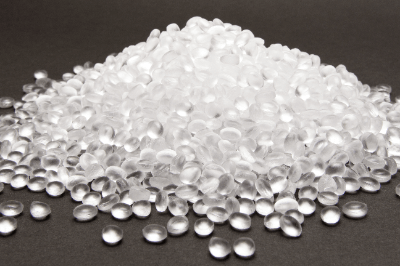What Is Polyethylene?

Polyethylene is a type of plastic resin sometimes abbreviated as PE. It is a resin composed only of carbon and hydrogen atoms and basically produces only water and carbon dioxide when burned.
The amount of branched chains and molecular weight of polyethylene vary depending on the manufacturing process. Low-density polyethylene (LDPE), which is highly branched and has low crystallinity, is transparent and soft. High-density polyethylene (HDPE), which has fewer branches and higher crystallinity, has excellent impact resistance. Ultra-high-molecular-weight polyethylene (UHMW-PE), which has excellent mechanical properties, is also available.
Uses of Polyethylene
Polyethylene is a polymer obtained by polymerizing ethylene (C2H4). It is used in a wide range of applications due to its advantages, such as easy processing and low cost.
Polyethylene has different properties depending on its density. Low-density polyethylene (LDPE) has good processability and is used for wrapping film, tube containers for mayonnaise and other products, and plastic bags.
High-density polyethylene (HDPE) is impact-resistant and is used in plastic bags, buckets, other sundries, and kerosene tanks, among others. There is also ultra-high-molecular-weight polyethylene (UHMW-PE), which has excellent mechanical properties and is used in separators for lithium-ion batteries.
Structure and Characteristics of Polyethylene
Polyethylene is obtained by polymerizing ethylene (C2H4), which has a carbon-carbon double bond. It has a simple structure consisting only of carbon and hydrogen atoms.
The difference between low-density polyethylene and high-density polyethylene introduced earlier is density. The manufacturing process for both is different. In the case of low-density polyethylene, a large number of branched molecular chains are produced during the polymerization reaction. This makes it difficult for the polymers to align with each other, resulting in lower crystallinity and lower density.
On the other hand, high-density polyethylene does not produce branched chains during the polymerization reaction, and linear polymers are easily aligned, resulting in a high degree of crystallinity and density.
LDPE and HDPE, which have different higher-order structures, have very different physical properties: LDPE is easy to process, transparent, and soft, but has low heat resistance. HDPE, on the other hand, has high heat resistance, chemical resistance, and impact resistance, but is cloudy white like a plastic bag and less transparent than LDPE.
Polyethylene Toxicity and Environmental Impact
Polyethylene is an inert substance, which means that even if it enters the body, it is eliminated without causing chemical reactions. In addition, polyethylene is composed only of carbon and hydrogen atoms, so when it burns, it basically produces only carbon dioxide and water. On the other hand, since polyethylene is used in large quantities throughout the world, there are concerns about the environmental impact of incinerating all unneeded polyethylene. For this reason, polyethylene has recently been recycled and reused. However, the recycling rate is still not high enough, and technological development for polyethylene reuse is still underway.